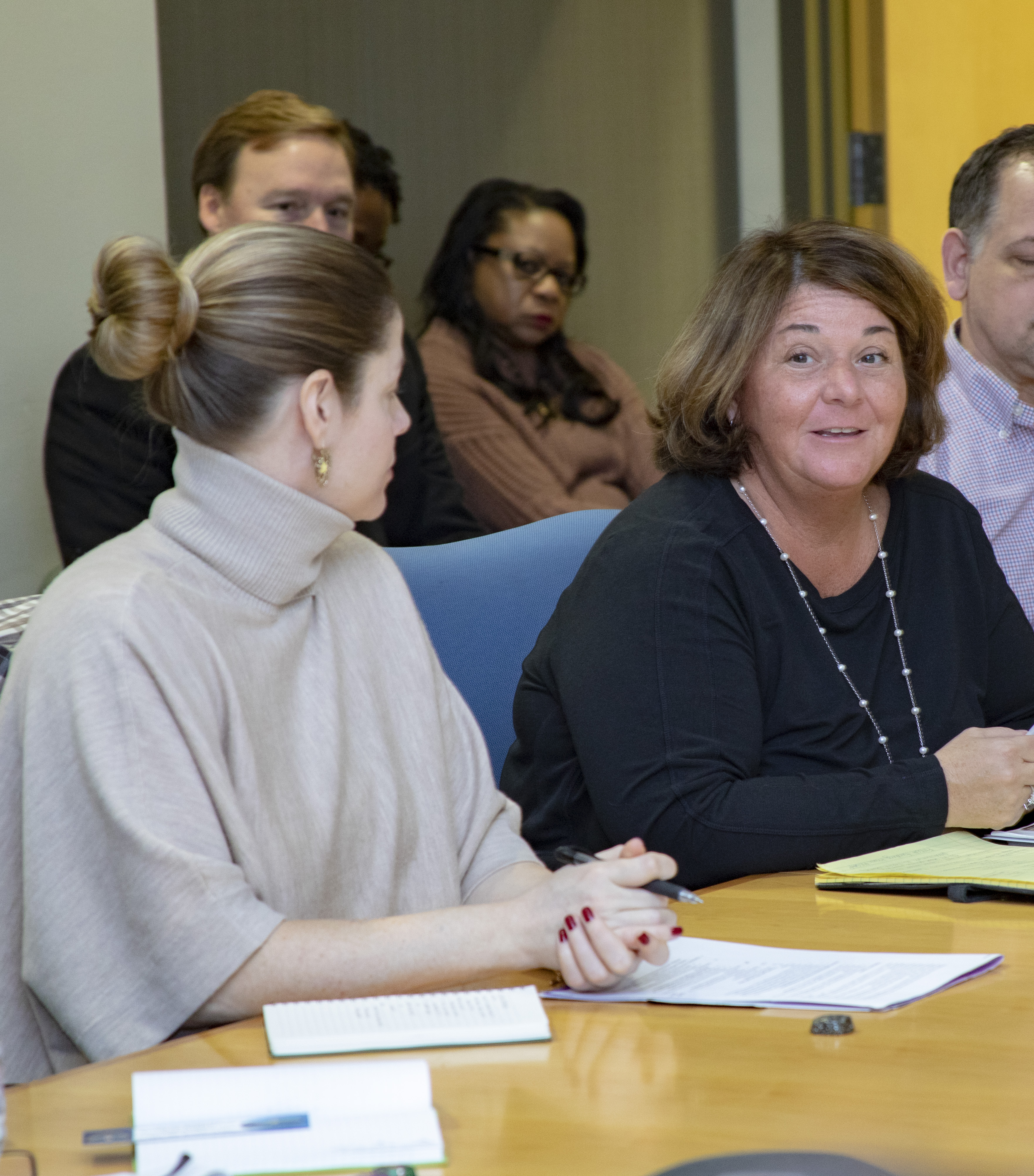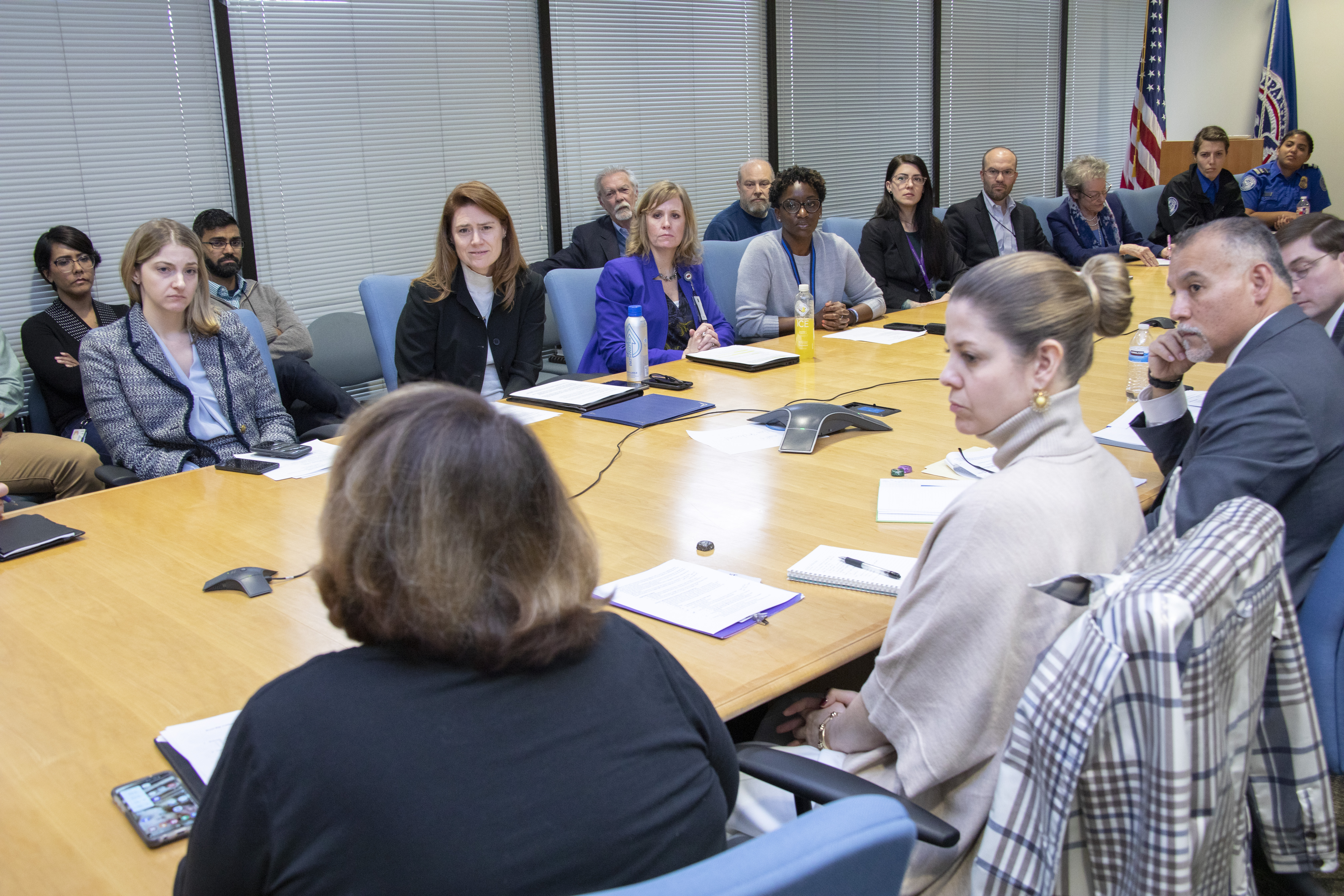
Human trafficking is an urgent humanitarian issue, and TSA is tackling the problem head-on by collaborating with DHS and stakeholders.
In January, DHS released a strategy to combat human trafficking, and TSA Acting Deputy Administrator Patricia Cogswell moderated a panel discussion on the issue at TSA headquarters to bring more awareness to the issue.
Defined as the use of force, fraud or coercion to obtain some type of goods or services, such as forced labor or commercial sex, human trafficking is a global epidemic. Every year, millions of men, women and children are trafficked worldwide – including right here in the U.S.

The U.S. National Human Trafficking Hotline reported 10,949 cases of human trafficking in 2018 and received over 41,000 phone calls. These numbers continue to grow each year.
In keeping with the White House National Action Plan to Combat Human Trafficking, which will be released later this year, Cogswell said, “The DHS Strategy is modeled after the four Ps – prevention, protection, prosecution and partnerships.” The priorities focus on:
- Preventing exploitation crimes
- Identifying, assisting and protecting victims
- Investigating and prosecuting perpetrators
- Partnering with DHS components
- Enabling DHS to combat these illicit activities through organizational improvements
TSA conducted a survey, which shows human trafficking happens in all modes of transportation. Sex trafficking is most widely recognized; however, slave labor or labor trafficking is considered the most prevalent. Traffickers are looking for areas where there’s a lack of security and public visibility is low.
Elisabeth Barna of the American Trucking Associations said combating human trafficking is a priority for the trucking industry. She said the 3.5 million professional truck drivers are the eyes and ears on our highways, and all of the trucking industry, along with the bus industry, is being trained to identify human trafficking incidents and how to report possible situations.
“Human trafficking affects all areas of the country and on all roads our drivers travel,” Barna noted. We are working with our motor carriers, shippers, our workforce, suppliers, vendors and more. We are much stronger together with [TSA] as you work with your airline and other transportation partners.”
Brian Shifflett is with the Federal Air Marshal Service, which is working with other federal agencies to investigate and combat human trafficking in the transportation system, including recent operations to d

Jennifer Foley manages George Mason University’s Criminal Investigations and Network Analysis Center of Excellence and led human trafficking research and development for DHS Science & Technology. “Our first efforts were designed to better understand the trafficking space and the research and development needs of those who are working to combat it,” she said.
Foley said there are gaps in technology to fight this problem due to funding constraints. “There are so many competing demands for funding and resourcing. This also applies to training and case workflow technologies.… So, we’re pursuing an analytic capability to assist with case investigations.”
Participants in TSA’s human trafficking survey believe using innovative technologies, like artificial intelligence and biometrics, are useful in combating human trafficking followed by social media. Overwhelmingly, all participants acknowledged the need for advanced training in recognizing human trafficking indicators.
To combat human trafficking, DHS is partnering with TSA, other components and government agencies, law enforcement and transportation stakeholders. Together, the belief is we will strive to end these illicit activities and protect vulnerable communities from further exploitation.
